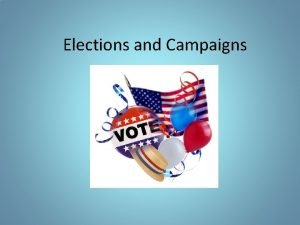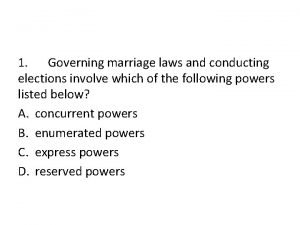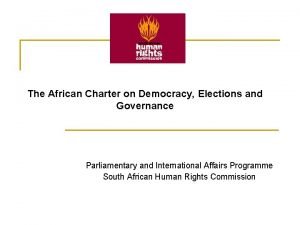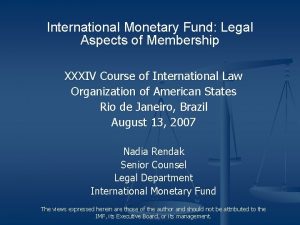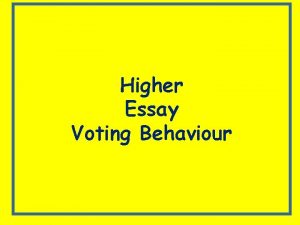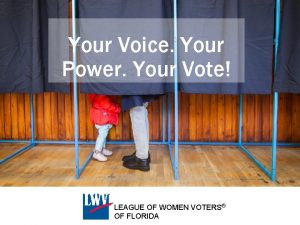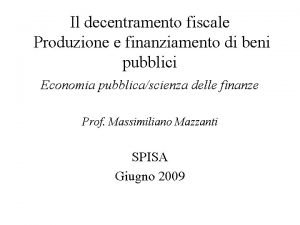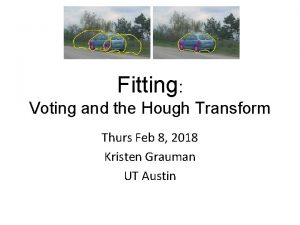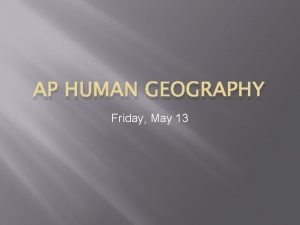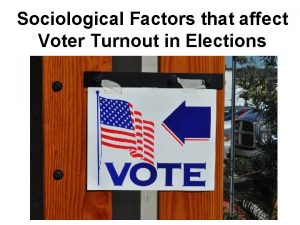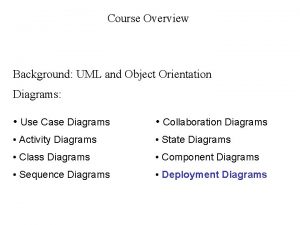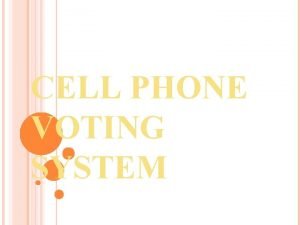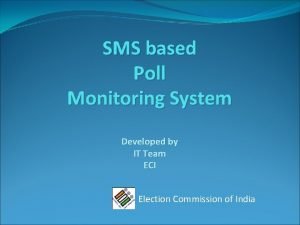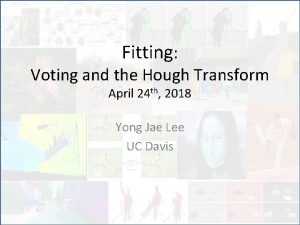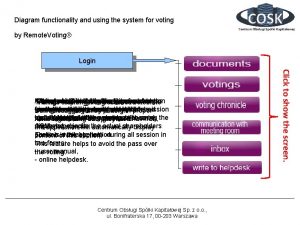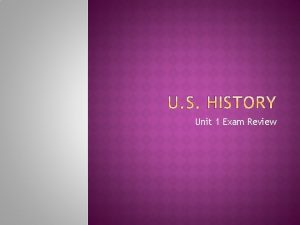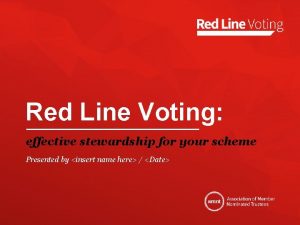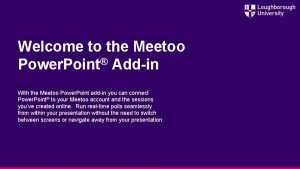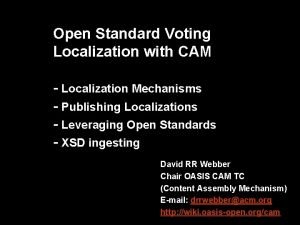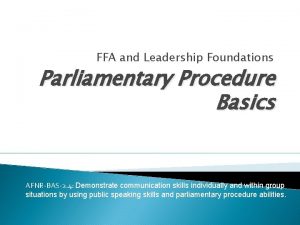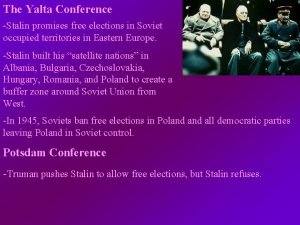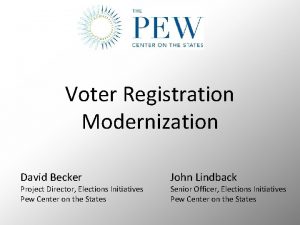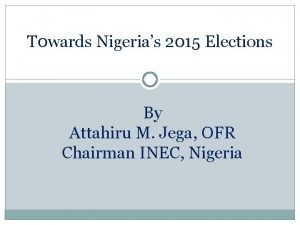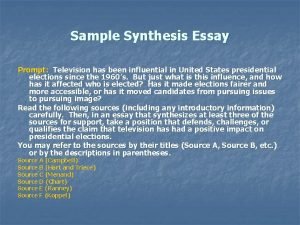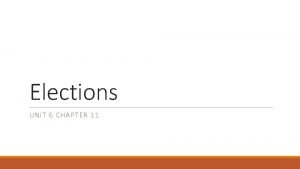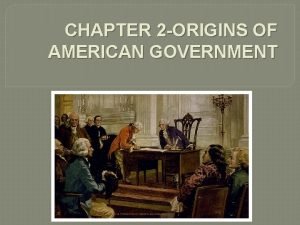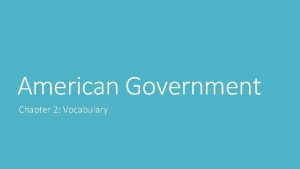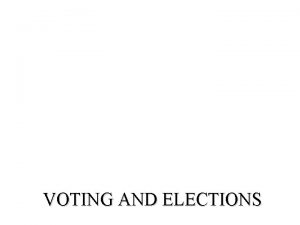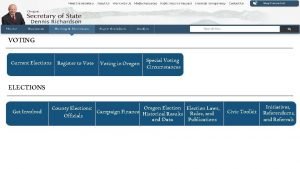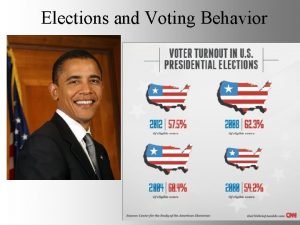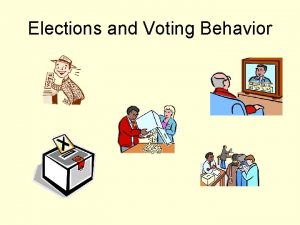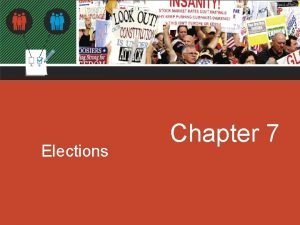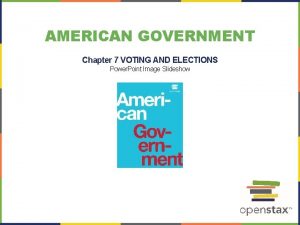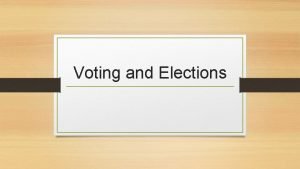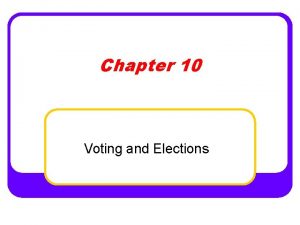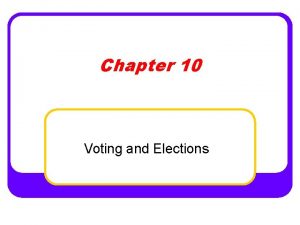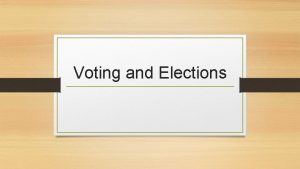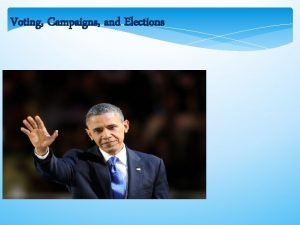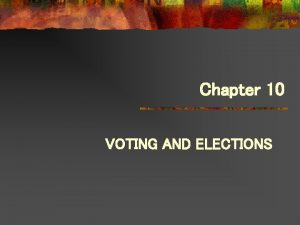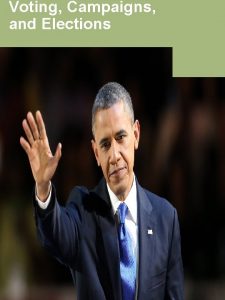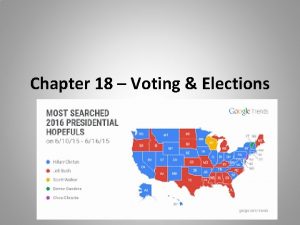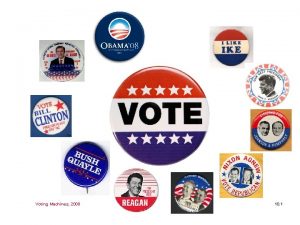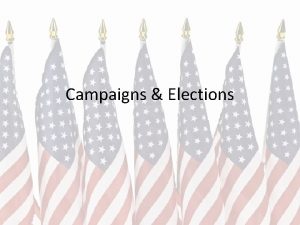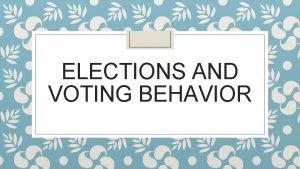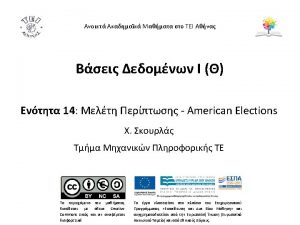AP Government Voting and Elections How American Elections
































- Slides: 32

AP Government: Voting and Elections

How American Elections Work Important functions in society 1. Legitimizing actions of elected officials—When legitimacy is high, even losers of elections accept the results peacefully 2. Provide regular access to political power 3. Socialize and institutionalize political activity—makes it possible for most political participation to be peacefully channeled through the electoral process

Three Kinds of Elections: 1. Those which select party nominees (Primaries)

2. Those which select officeholders from among the nominees (General)

3. Those elections on specific issues: in which voters engage in making or ratifying legislation on specific issues 2 Types: Initiative Petition: Enables voters in 23 states to place proposed legislation on the ballot if they gather the required number of signatures on a petition (Initiate changes Referendum: form of direct legislation in which voters of a state are given the chance to make changes (approve or disapprove by popular vote)on some legislative act (school bonds)or constitutional amendment in the state constitution

California's Supreme Court has upheld a referendum passed by the majority of people of California outlawing gay marriage but said the 18, 000 same-sex weddings that took place before the ban would remain valid. Activists had been seeking to overturn the referendum, known as Proposition 8 which redefined a marriage as a union between a man and a woman.

Tale of Three Elections: 1800 Election 1. No primaries; no nominating conventions; no candidate speeches; no reporters 2. Incumbent President John Adams; Challenger Thomas Jefferson 3. Once nominated, candidates did not campaign; state and local organizations promoted their causes

1800 Election (Continued) 4. Focus of campaign was on state legislatures (not the voters) which had the responsibility for choosing members of the electoral college. 5. Newspapers were openly partisan and made no attempt to be objective 6. Election thrown into the House of Representatives when there was a tie vote; House voted in Thomas Jefferson (12 Amendment)

1896: A Fight over Economic Interests 1. National nominating conventions had become well established 2. Election fought primarily over economics 3. Bryan broke with tradition and actively campaigned in person, traveling through 26 states. Presidential Candidate and Wife on Train Democratic presidential candidate William Jennings Bryan campaigns from the back of a train with his wife and aides.

4. Mc. Kinley ran a front-porch campaign from his home in Ohio and managed to label the Democrats as the party of depression. 5. The Republicans won overwhelmingly in the industrial NE and Midwest and became known as the nations majority party for the next several decades A campaign poster trumpets the candidacy of William Mc. Kinley, emphasizing a prosperous economy and strength abroad.

Electoral Map for 1896

2008: An Election about Change due to the weak economy Obama’s call for change became his slogan when he declared his presidential candidacy in February ’ 07 The people’s verdict in ’ 08, just as in 1800 and 1896 was about change in Washington.

2012: Obama v Romney

2012 Electoral Map

There have been times in the U. S. Political History when realignment elections have occurred. These occur when there is a major shift in the political party that American citizens support. Why are political parties declining? Split-Ticket voting –Independents! National Nominating Convention –Party Loyalty there?

Notice the shift by states from election to election—esp. the Southern and eastern seaboard states At Left: 1988 Electoral Map (H. W. Bush (R ) v Mike Dukakais (D) At Right: 1992 Electoral Map H. W. Bush (R ) v Clinton (D)

At Left: 1996 Electoral Map (Clinton (D) v Bob Dole ( R ) At Right: 2000 Electoral Map W. Bush (R ) v Al Gore (D)

At left: 2004 Electoral Map (W. Bush (R ) v. Kerry (D)) At Right: Electoral Map 2008 (Mc. Cain ( R) v. Obama (D)

How American has Changed

Who Votes and Who Stays Home? Why? To Vote or Not To Vote?

Nearly two centuries of American electoral history include greatly expanded suffrage (the right to vote). As the right to vote has been extended, proportionately fewer of those who are eligible have chosen to exercise that right. The pattern is the decline of the right to vote.

Why is voter turnout lower in midterm elections than in presidential elections? Why is voter turnout the lowest of any of the world’s democracies?

Factors that influence voters. . . People have a high sense of political efficacy—the belief that ordinary people can influence the government. People also vote out of civic duty to support democratic government, even if they are indifferent about the outcome.

Factors that influence voters. . Personal background Age Education (Affects voter turnout most) Income (Affects voter turnout most) Religion Racial/ethnic background Are they cross-pressured?

Factors that influence voters. . 2. Voter’s loyalty to Political Parties Strong party voter? (Party loyalty most important) Weak party voter? (Influenced by the issue, not party loyalty) An independent? (neither Republican or Democrat) 3. Campaign Issues Pollution Energy crisis Inflation Gun control Crime Unemployment Education

Factors that influence voters. . Images/Propaganda 1. How a candidate is perceived 2. Strong or weak on issues? 3. How well candidate uses propaganda techniques. 4. Tone of voice, influence of music in ads?

Profiles of Voters Regular voters Higher than average education level** Middle-aged Higher than average income** Married people White people and minorities with high education and income Government employees Regular NON-voters Not formal citizens Not met residency requirements Not registered to vote Young people** (lowest voter turnout) Unmarried people Minority groups

Registering to Voter registration was adopted at the turn of 20 th century to prevent corruption associated with stuffing the ballot boxes. States in upper Great Plains/NW make it the easiest to register; there is NO registration at all in North Dakota and four states allow same day registration. South still has difficult forms of registration and with that low voter turnout rates.

Motor Voter Law— 1996 went into effect requiring states to permit people to register to vote at the same time they apply for driver’s licenses. Makes registration much easier by allowing people to check a box on their driver’s license application or renewal form.

Explaining Citizens Decisions Mandate Theory of Elections. Many journalists and politicians believe the winner of an election has a MANDATE from the people to carry out the policies he or she promised during the campaign. Three major elements of voters’ decisions: 1. voters’ party identification, 2. voters’ evaluations of the candidates 3. the match between voters’ policy positions and those of the candidates and parties (known as policy voting).

Explaining Citizens Decisions Most policies have consequences for the wellbeing of certain groups or for society as a whole. According theory of “retrospective voting”, voters ask the question, “What have you done for me lately? ” Public policy—esp. the perception of economic policy—can affect elections as people who are unhappy usually blame the Incumbent.

Review of Electoral College Why do we have the Electoral College? How are electoral votes determined for a state? What if no candidate gets 270 electoral votes?
 Fptp pros and cons
Fptp pros and cons Presidential elections exploration and announcement
Presidential elections exploration and announcement Governing marriage laws and conducting elections
Governing marriage laws and conducting elections African charter on democracy, elections and governance
African charter on democracy, elections and governance What are the three levels of government
What are the three levels of government Imf voting power
Imf voting power Voting behaviour essay
Voting behaviour essay Voting rights
Voting rights Voting by feet tiebout
Voting by feet tiebout Hough voting
Hough voting A student who lives in minneapolis chooses to spend
A student who lives in minneapolis chooses to spend Sociological factors that affect voting behavior
Sociological factors that affect voting behavior Deployment diagram notations
Deployment diagram notations Deployment diagram for online voting system
Deployment diagram for online voting system Brainpop voting
Brainpop voting Sms based voting system
Sms based voting system Online voting system project proposal
Online voting system project proposal Hough voting
Hough voting Deployment diagram for online voting system
Deployment diagram for online voting system Which statement best summarizes chapter 11
Which statement best summarizes chapter 11 Red line voting
Red line voting Meetoo voting
Meetoo voting Vevox voting
Vevox voting Vtools enotice
Vtools enotice Instant runoff voting excel template
Instant runoff voting excel template What are the four common methods of voting in ffa
What are the four common methods of voting in ffa Stalin promise free elections
Stalin promise free elections David becker elections
David becker elections Conclusion on elections
Conclusion on elections Ap lang synthesis essay television presidential elections
Ap lang synthesis essay television presidential elections “elections are key to democracy”
“elections are key to democracy” Chapter 2 american government
Chapter 2 american government Origins of american government vocabulary
Origins of american government vocabulary

